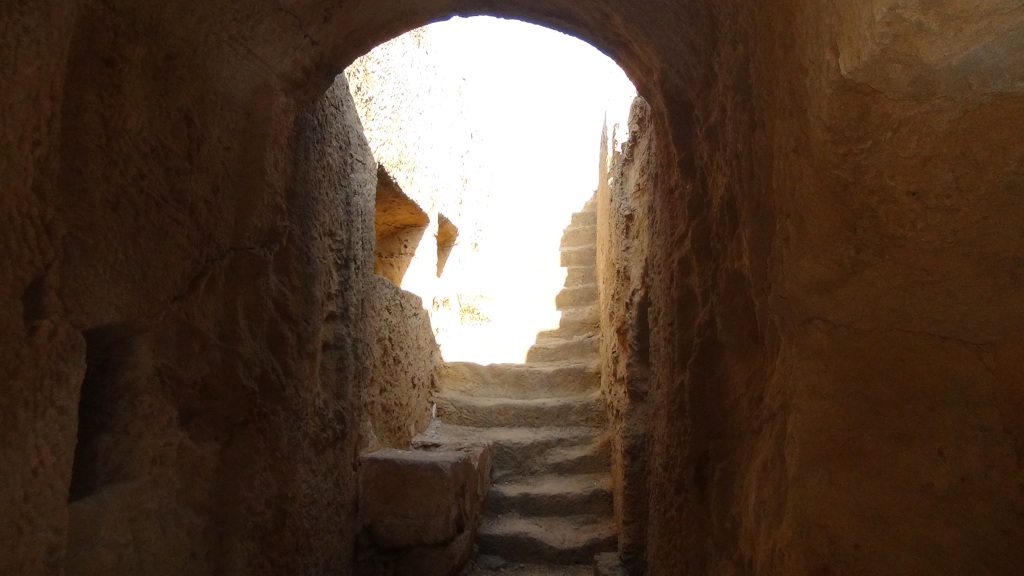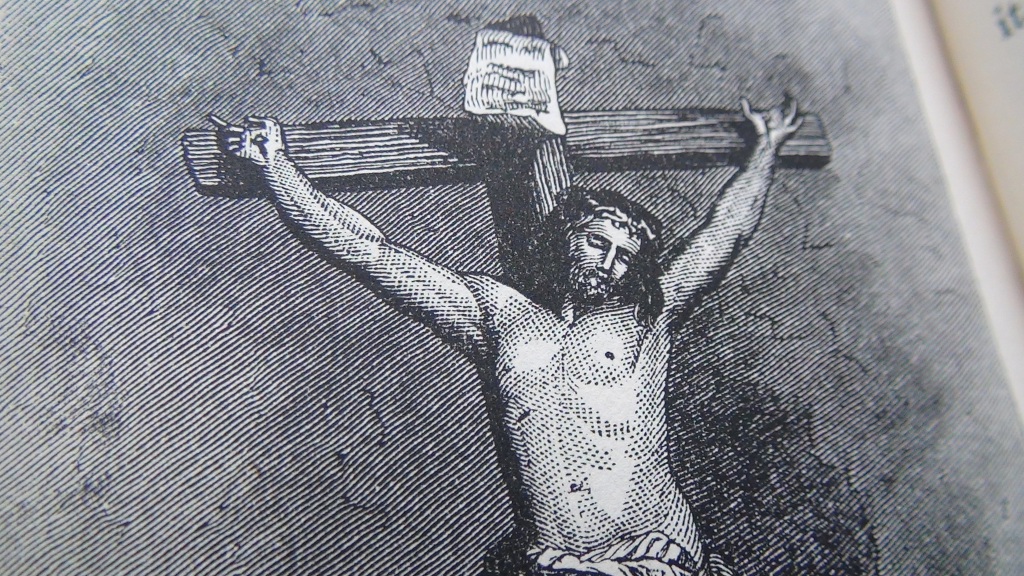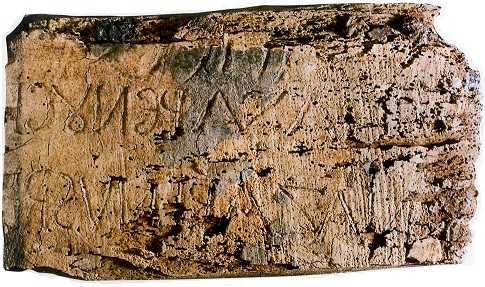Archive for March, 2024
The Resurrection of Christ did happen
Posted by simon peter sutherland in Christianity, The Bible on March 31, 2024

Over Easter I have posted a number of articles surrounding the crucifixion of Christ. These have been on the Titulus Crucis, the universal offing of Christ, and the case for Christ’s crucifixion on a Thursday.
This post on Easter Sunday relates to Paul’s statement that the resurrection of Christ was witnessed by 500 people at one time. This statement can be found in 1 Corinthians 15: 1-8 (NKJV).
“Moreover brethren, I declare to you the gospel which I preached to you, which also you received and in which you stand, by which also you are saved, if you hold fast that word which I preached to you – unless you believed in vain.
For I delivered to you first of all that which I also received: that Christ died for our sins according to the Scriptures, and that He was buried, and that He rose again the third day according to the Scriptures, and that He was seen by Cephas, then by the twelve. After that He was seen by over five hundred brethren at once, of whom the greater part remain to the present, but some have fallen asleep. After that He was seen by James, then by all the apostles. Then last of all He was seen by me also, as by one born out of due time.”
This letter is generally believed to have been written about 53-57 AD.
As I have previously stated, “This claim is extraordinary. Some may say ‘well, that’s just what the Bible says...’ as though the resurrection of Jesus is just a claim made in the Bible alone and that the Bible is just another religious book. But the problem is, even if the entire New Testament, or the individual writings were not part of the Bible, the letter of Paul to the Corinthians would still be extant. Even as a singular document, Corinthians would still stand as a historical source by itself.”
We can be certain that the resurrection of Christ is an absolute fact and the stone was rolled away, not by the Romans, or by early Christians, but by an angel of the Lord (Matthew 28: 2-4)
Wherever you are this Easter, whatever you are going through, remember that Jesus Christ died for your sin and that He rose again for your justification.
Was Jesus crucified on Good Friday?
Posted by simon peter sutherland in Christianity, The Bible on March 30, 2024

I have been very reflective lately concerning the importance of Easter and I like many have been observing this important Christian festival.
I like Good Friday, and yesterday I was minded to post an article on the topic ‘Was Jesus crucified on a Friday?’ I wanted to present my thoughts concerning the historic perspective of the crucifixion day rather than the traditional day celebrated by the church.
For many believers and unbelievers it is automatically assumed that Jesus was crucified on a Friday and I don’t want to be insensitive to believers who might want to remember Good Friday as the day our Lord was crucified. I too hold Good Friday in regard. However I have decided to mention a few reasons why I believe it is more likely that Jesus was crucified in the middle of the week either on a Wednesday or a Thursday.
Here are my reasons;
- Mark 15: 42 places the evening of the crucifixion at the beginning of preparation day, “the day before the Sabbath” (NKJV).
- Luke 23; 54 places the burial of Jesus on preparation day with the Sabbath drawing near.
- John 19: 42 also places the laying of Jesus in the tomb on preparation day.
- Matthew 27: 62 places the gathering of the chief priests and the Pharisees on “the next day” after the crucifixion on “the Day of Preparation” (NKJV).
It is important to note that the event of the crucifixion and death of Jesus had already taken place at the point we meet these verses. This means a whole day had gone by where Jesus faced a series of trials leading to His crucifixion and death, and in the Jewish calendar the day begins at sunset, as stated in Genesis 1: 5 “the evening and the morning were the first day.“.
In contrast to our western minds when a new day begins at midnight, the new day in Biblical Israel began at sunset. This means the preparation day began on Thursday evening, meaning that Jesus had been crucified earlier on that day.
Likewise, in Matthew 12: 40 Jesus prophesies that “as Jonah was three days and three nights in the belly of the great fish, so will the Son of Man be three days and three nights in the heart of the earth.” (NKJV)
I have looked at many arguments concerning this and there seems to be no way around it; no matter how we look at it, Friday to Sunday does not give us three days and three nights. On the contrary, it would be more fitting to say this;
- Thursday evening to Friday evening gives us one day and one night.
- Friday evening to Saturday evening gives us one day and one night.
- A Saturday evening to a Sunday morning gives us one night and a morning.
Thus multiplied together gives us a period of three days and three nights, leaving Jesus rising from the tomb on the third day being a Sunday morning. Luke 24: 1 places the first sighting of the resurrection of Christ on “the first day of the week, very early in the morning,”
If Jesus was crucified on a Wednesday, that would give us even more time, and perhaps too many days. However, if Jesus had been crucified on a Friday, that would only give us a Friday and Saturday evening being only two nights and would not answer the statements made that Jesus was laid in the tomb as the Preparation Day was approaching and just begun.
In order to believe that Jesus was crucified on a Friday one would have to interpret Matthew 12: 40 in a metaphorical or symbolic sense and not literal.
I hope these thoughts give you pause for reflection during this important festival when we remember what Christ has done for us.
Christ died for all mankind, even Judas!
Posted by simon peter sutherland in "Calvinism", Limited Atonement, Theology on March 28, 2024

Over the last 20 years I have been in a continuous and sporadic confrontation with the 5 Point Calvinist view of Limited Atonement. I have read books, articles, listened to sermons, debates and had many conversations with a number of believers who hold to the the view that Christ did not die for the whole world but only for His elect.
I reject that viewpoint.
In the Bible there many verses that state that Jesus Christ died for all, yet according to many 5 Point Calvinists, this word all, does not always mean all. Fair point, there are times when all does not mean all. Does that observation however mean that Jesus Christ did not die for the whole of mankind? No, it does not.
At this stage, there is little point my listing the considerable amount of New Testament verses which are believed to affirm that Jesus died for all mankind, since 5 Point Calvinists differ to the plain interpretation of these passages. So I will focus upon one passage and work my way from there.
In Matthew 26: 17-30 Jesus celebrates the Passover with His disciples and institutes the Lord’s supper. Those who were present were the 12 disciples. This includes, Peter, James, John, Andrew, Philip, Judas Iscariot, Judas Thaddeus, Matthew, Thomas, James (son of Alpheus), Bartholomew, and Simon the zealot.
The feast took place on the evening of the first day of the feast of Unleavened Bread (Matthew 26: 17). Verse 20 says “When evening had come, He sat down with the twelve.” Then Jesus refers to the one who will betray Him (verse 21) and the disciples are exceedingly sorrowful and they ask the question “Lord, is it I?” (verse 22) Then Jesus responds by saying “He who dipped his hand with Me in the dish will betray Me.” (verse 23) He then goes on to say “woe to that man by whom the Son of Man is betrayed! It would have been good for that man if he had not been born.” (verse 24)
Then Jesus takes the bread, blesses and breaks it and gives it to His disciples saying “Take, eat; this is My body.” (verse 26) We assume all 12 disciples ate the bread at this point. Then in verses 27-28 Jesus takes the cup and says “Drink from it, all of you. For this is My blood of the new covenant, which is shed for many for the remission of sins.“
This word translated many is is described by Greek scholars as meaning what it says on the tin, a large number. There is basically no limitation to that word. The word “shed” describes a pouring out in a sacrificial sense and is steeped in Old Testament knowledge. He means that without this shedding of blood there is no remission of sin or sins.
When you consider the unmoveable fact that Judas was present when Jesus said that and when He offered all 12 disciples to eat and drink this Passover, we cannot but assume that He said this to all 12 disciples including Judas.
Thus, if Limited Atonement were true as is stated in the 5 Points of Calvinism, then Christ only died for His elect who would believe in Him and be saved. This would exclude Judas. Yet here in Matthew 26: 17-30 we see the exact opposite. We see Jesus offering Himself to all 12 disciples, including Judas, yet Judas betrayed Him.
It is my belief that had Judas repented, He may have been saved? But he did not. This however does not mean that Christ did not die for him or for the rest of mankind, it merely means that all do not receive Him.
Dwell upon these thoughts this Easter as we remember what Christ has done for us and all who believe in Him and keep His commandments.
Is the Titulus Crucis authentic?
Posted by simon peter sutherland in Biblical archaeology on March 22, 2024

In the Church of Santa Croce in Gerusalemme, Rome, is an artefact known as the Titulus Crucis.
Titulus Crucis is Latin for title of the cross and the item in focus is a piece of wood which is claimed by some to be the actual sign placed on the cross above Jesus’ head 2000 years ago and it may well be? It certainly seems consistent with the gospels to me.
In the gospel of Luke 23: 38 this title was written in Greek, Latin and Hebrew and reads,
“THIS IS THE KING OF THE JEWS”
In the gospel of John 19: 19 the title is written in Hebrew, Greek and Latin and reads,
“JESUS OF NAZARETH, THE KING OF THE JEWS”
The Titulus Crucis is written in Hebrew, Greek and Latin. I have viewed this item a number of times and I am fascinated by it.
The story goes that in the 4th century Helena (mother of Emperor Constantine) travelled to Jerusalem to discover the items associated with the life of Christ and she famously found the true cross and the nails and the Titulus Crucis. This history is attested to by Ambrose (c. 339-397) and Chrysostom (died 407)
Likewise a pilgrim named Egeria travelled to Jerusalem about 381/2-384 and wrote about seeing this item in a chapel and the writings of Egeria are considered very reliable.
The story goes that Helena kept a section of the Titulus in her own private chapel and in later centuries the item was thought to be lost until it was rediscovered above the altar.
I have visited Helena’s chapel a number of times and I have spent considerable time looking at the Titulus Crucis in another room and even though I am not a Roman Catholic nor have any part in that religion, nor do I consider the early Roman Church to be the same religion, I view this item as sacred. I do not know of any evidence to make me consider it to be a forgery.
In contrast to the accounts in Matthew 27: 37, Mark 15: 26, Luke 23: 38 and John 19: 19 the Titulus Crucis does not read as though it has been copied from the four gospels but has its own character.
In my opinion Matthew’s gospel was originally written in Hebrew whereas a version of Luke was written to a Roman official in Latin and John in Greek. For these reasons I believe it is possible that Matthew was quoting the Hebrew line of text, Mark the Greek line of text and Luke the Latin line of text and John the Greek line of text. This accounts for the minor differences in all four gospels.
Matthew 27: 37 reads “THIS IS JESUS THE KING OF THE JEWS.”
Mark 15: 26 reads “THE KING OF THE JEWS.”
Luke 23: 38 reads “THIS IS THE KING OF THE JEWS.”
John 19: 19 reads “JESUS OF NAZARETH THE KING OF THE JEWS.”
When viewed from this perspective I believe there is no contradiction in the gospels. Each author was writing from a specific section of the title and from the perspective of their intended audience.
Likewise I am of the opinion that the original title may have been highlighted in some way to make it more readable for the passers by, and this item is believed to have been covered in white chalk and the carved out text to have been painted black.
When I have looked closely at the item it is very clear that the carved writing is rugged and unique, and to me the writing reflects the urgency and controversy of the moment as implied by the context of John 19: 19 where John writes that “Pilate wrote a title and put it on the cross.”
For me this is a very important observation.